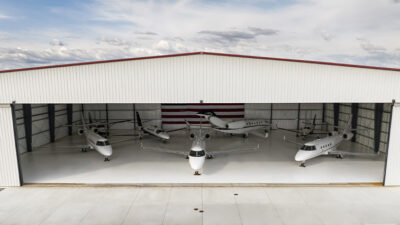Crew Resource Management: Two Critical Mask Donning Checklist Items

Following a cabin depressurization, the successful donning of a mask should be added to the emergency protocol. Incorporating these two key steps into the emergency descent procedure could further reduce the potential for an incapacitation to the crew.
1. Ensure Adequate Fitting of the Mask and Oxygen Recovery of the Pilot—The “1 Minute Rule”
How long should it take a hypoxic pilot to recover completely once the mask is donned? The answer is 60.13 seconds. This conclusion is from research conducted at SAMI, where the average oxygen saturation of 63% returned to 99% in 60 seconds—hence the “1 Minute Rule”. If a crewmember is not completely normal within 1 minute following the donning of the mask then the crew should check the pilot’s mask, as it may not be fitted properly. At 40,000 feet there is no room for error. The mask must be tightly fitted as the slightest amount of leakage may result in incapacitation.
2. Verbalize the Need for Middle Ear Equalization During Descent
Another vital mask donning check is crew verbal communication to frequently equalize their ears while wearing the mask during the descent. This is a critical issue to avoid incapacitating ear pain on final approach. The cabin pressure at 40,000 feet is extremely low. As the pilot begins an emergency descent it is very important that the pilot equalize his ears as needed. If the pilot does not equalize the ears severe pain can begin, which in and of itself is incapacitating, especially on final approach.
The initial descent from 40,000 feet will be easy as the net pressure differential between 40,000 feet down to 30,000 feet is quite small. However, as the aircraft approaches 20,000 feet the atmosphere becomes denser and hence the need to equalize will become more common. The lower the altitude the harder it will become to equalize and if not properly managed could result in severe ear pain on final approach that compromises this critical phase of flight. If the pilot neglects to equalize during descent the ear can become “trapped” and no amount of equalizing will help at that point. As the pressure continues to build up significantly in the final 10,000 feet of descent the pain can become so severe that it could rupture the ear drum causing immediate loss of hearing and, even worse, severe vertigo with nausea and vomiting.
In almost all cases, a pilot can sense some fullness or pressure build up in the ear before the pain ensues. That is why it is important to teach and practice this skill. Equalizing with the mask on is not as easy as we might think. The hard shell of the mask makes it difficult to pinch the nose so that the Valsalva technique works. Practice is essential to learn how to slightly rotate the hard shell portion of the mask without compromising oxygen flow but allowing the ability to perform the Valsalva technique. During a true emergency there is going to be significant anxiety and focused attention to procedures making it easy to ignore early ear discomfort.

SAMI is the prime research institute regarding the phenomena of Slow Onset Hypoxia. SAMI’s decades of research have improved the way aviators around the world prepare themselves for oxygen contingencies. The patented DeSat Training program is the closest possible re-creation of the dynamic and task saturated environment a pilot will face during a pressurization event. This includes a medical understanding of hypoxia, FAA standard mask donning procedures, ATC communication, crew coordination, and post event training—all while operating at true altitudes and utilizing oxygen reserves.
http://www.SAMI-AeroMedical.com
© 2025 Southern AeroMedical Institute. All Rights Reserved.
Next ArticleRelated Posts

Navigating Geopolitical Uncertainty Using Business Aviation
Bigger business jets mean bigger fuel tanks, longer trips, more border crossings, and bigger wallets! With an equipment upgrade also comes the requirement for a knowledge upgrade.

Leadership, Accountability and Your Organization’s Risk Profile
Recent media attention has cast light on the unusual number of aviation system-related accidents, incidents and near-misses that have plagued our industry over the past several months.

